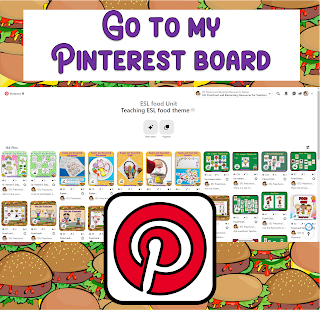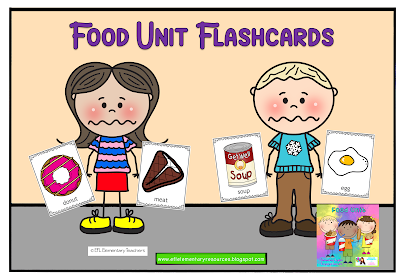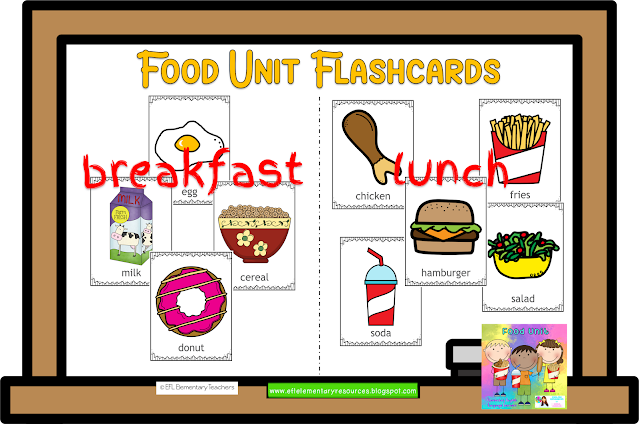This resource is part of the Food Unit for Elementary English Language Starters. It can be used by Grade K/3 English teachers.
Promote active learning with
the small cards, which are a smaller version from the bigger flashcards. With
this teaching tools students will engage in different activities or games that
you will plan to improve the retention of the new vocabulary from this unit.
Just dropping several ideas to use them.
Print your small cards that perfect for paired work in class.
Students will use their ability
to classify or categorize the food unit cards encouraging their critical thinking.
Personalizing/Personalising activities for your students
makes it more relevant to them. They have the opportunity to connect what they
are learning to their own experience, thought or likes, making the activity
more engaging. Place all the small cards on a table for them to go pick the
ones that they would plan a meal for themselves. They can take them to their
desk, draw the items and write down the food in their meals. They can come up
front and show their meal and have the students say if they liked it or not.
Inspire Communication with this activity. It is kinaesthetic option that involves some action. Hand in the picture
food small cards to a group of students and the order ticket to the other half.
The students with the small cards should be at their desks with the cards
facing down. The students with the order tickets should stand up and walk
around looking for the items to complete their order, asking questions: Do you
have a hamburger? If the student has the card, they have to give it to the student.
The first student to complete
the order ticket comes to the front and will take fist place. Students will stand
in the corresponding order. Give specific feedback as you highlight the correct
question that you hear: Pete, I heard you ask correct questions, very good!
Love this simple and interactive game. Use it to help reinforce the new vocabulary for the food unit words. Print all the small cards from the unit and the templates for the tic tac toe, all X and O.
This resource has more to check, go to this blog post:
https://eflelementaryresources.blogspot.com/2025/03/hamburger-prepositions-for-primary.html





















































